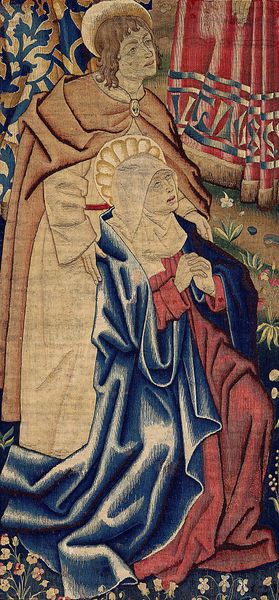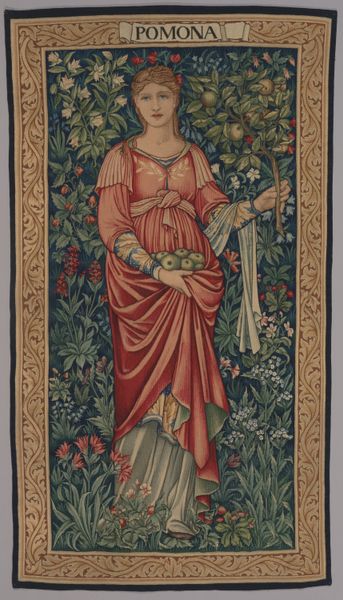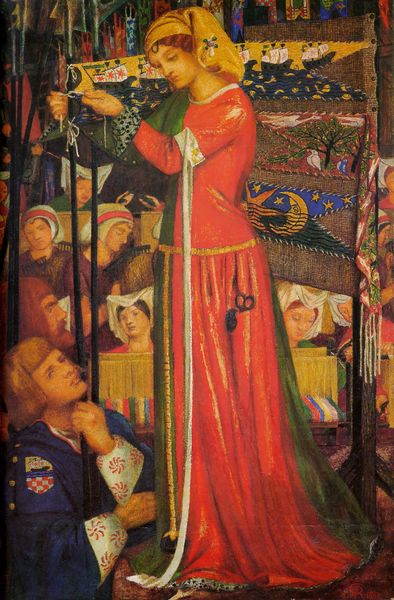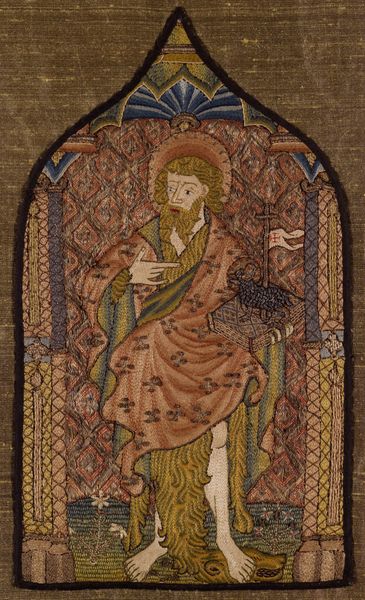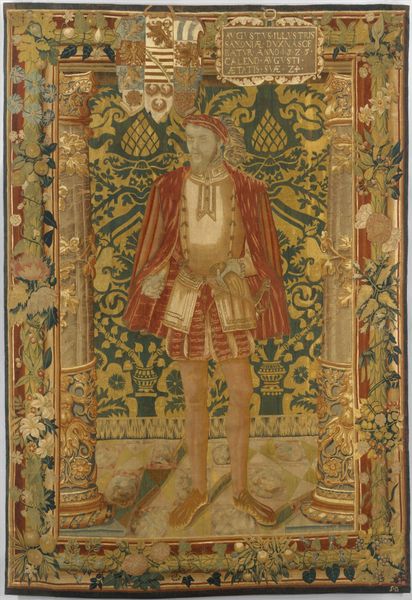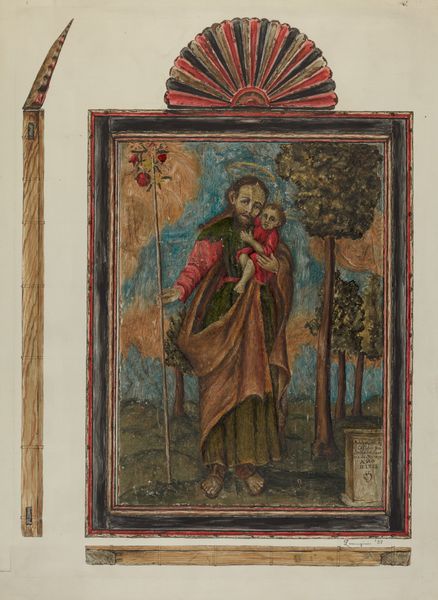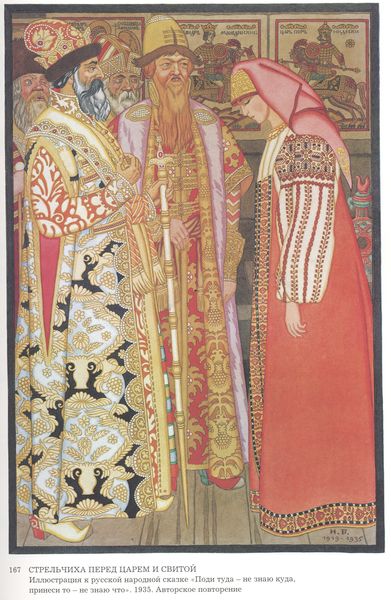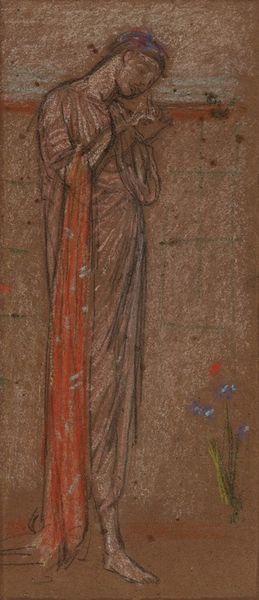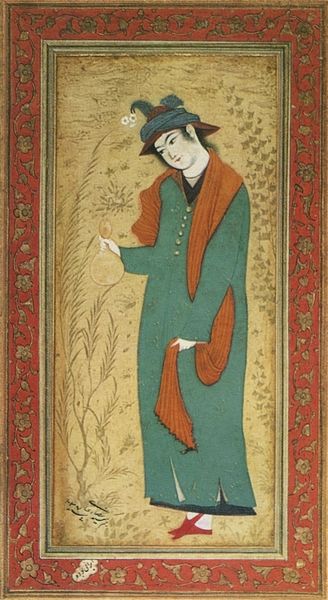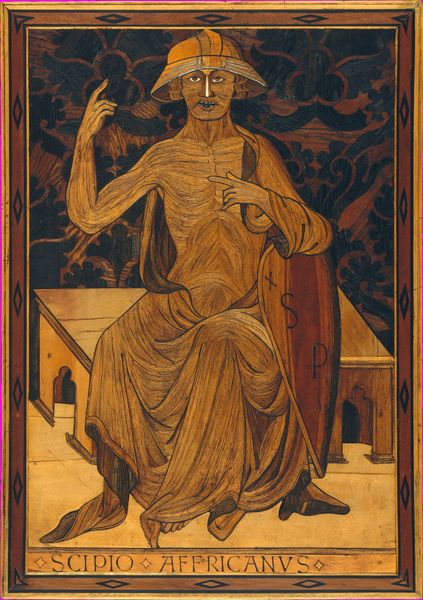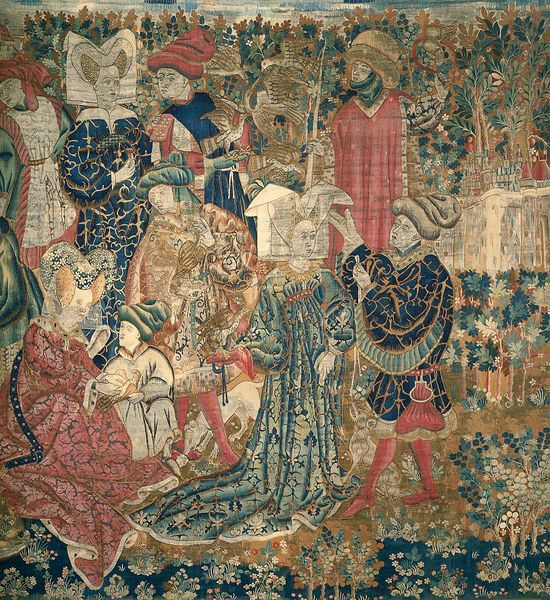
One of the Three Magi on a -Millefleurs- Ground c. early 16th century
0:00
0:00
silk, weaving, textile, wool
#
medieval
#
silk
#
weaving
#
landscape
#
textile
#
wool
#
figuration
#
history-painting
Dimensions: 63 x 48 1/2 in. (160.02 x 123.19 cm)
Copyright: Public Domain
This tapestry, "One of the Three Magi on a Millefleurs Ground," was made by an anonymous artist. The 'millefleurs' style, meaning 'thousand flowers', creates an idyllic backdrop, rich with symbolism and hinting at courtly life. Amidst this splendor stands one of the Magi, bearing gifts. Tapestries like these were not merely decorative; they were assertions of power, wealth, and cultural identity. Consider the social position of those who commissioned and those who created tapestries like these. The artist, likely a skilled weaver from a workshop, remains nameless, while the patron's status is elevated through this luxurious display. This Magi, with his noble bearing, may subtly represent the aspirations and self-image of the tapestry’s owner. Here, the personal and the political intertwine, reminding us that art often serves as both a mirror and a beacon, reflecting societal values and shaping our understanding of ourselves.
Comments
minneapolisinstituteofart about 2 years ago
⋮
The figure in this tapestry is likely one of the three kings who brought gifts to Jesus on the occasion of his birth. He has removed his crown out of respect and holds an elaborate covered chalice, intended as a gift. This figure is a fragment from a larger tapestry and has been joined with another partial tapestry produced around the same time and featuring a variety of flowering plants. The fashion for such "millefleurs"--meaning "a thousand flowers"--tapestries emerged in Europe around 1450 and remained popular into the early decades of the 1500s.
Join the conversation
Join millions of artists and users on Artera today and experience the ultimate creative platform.
